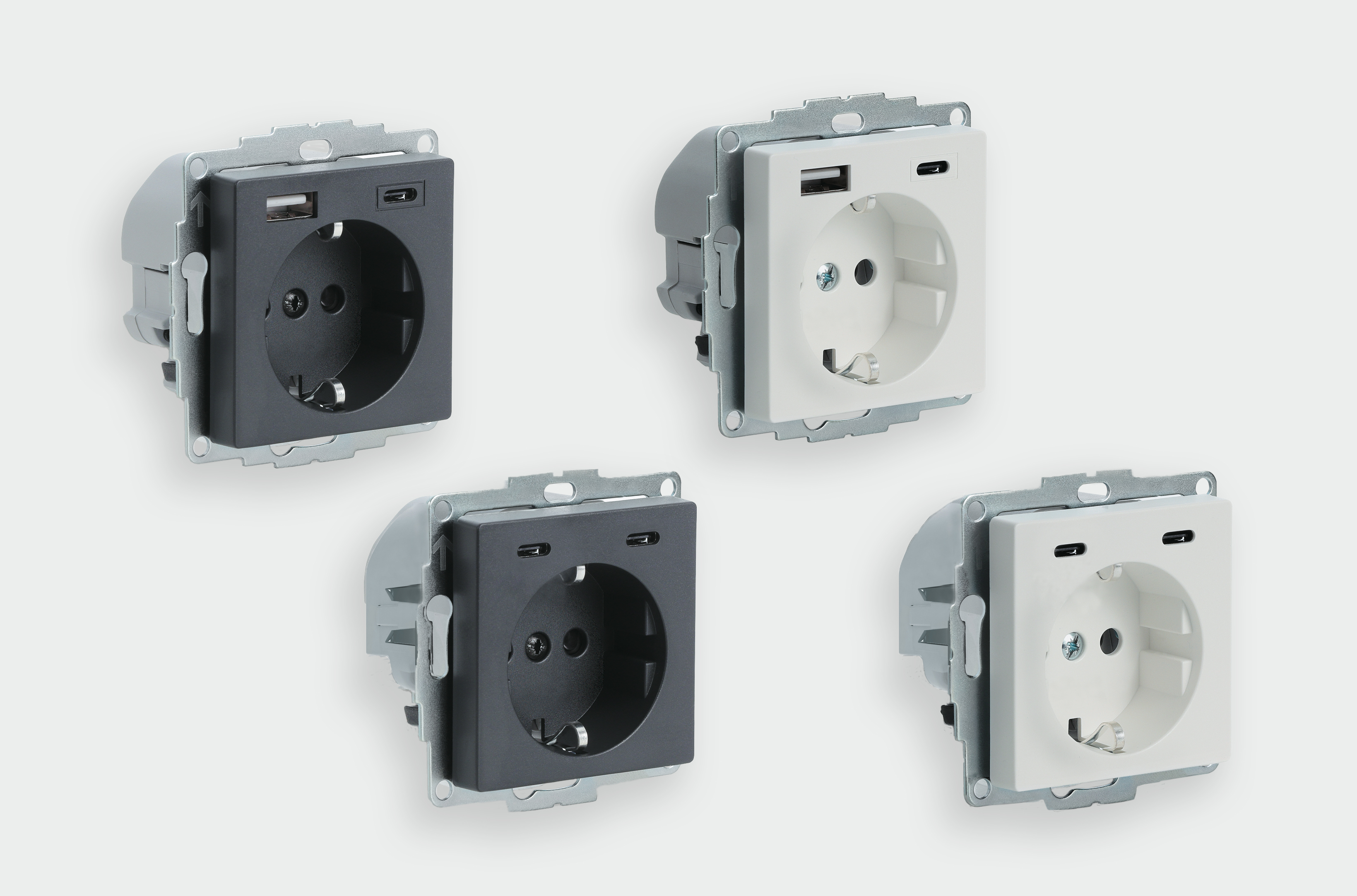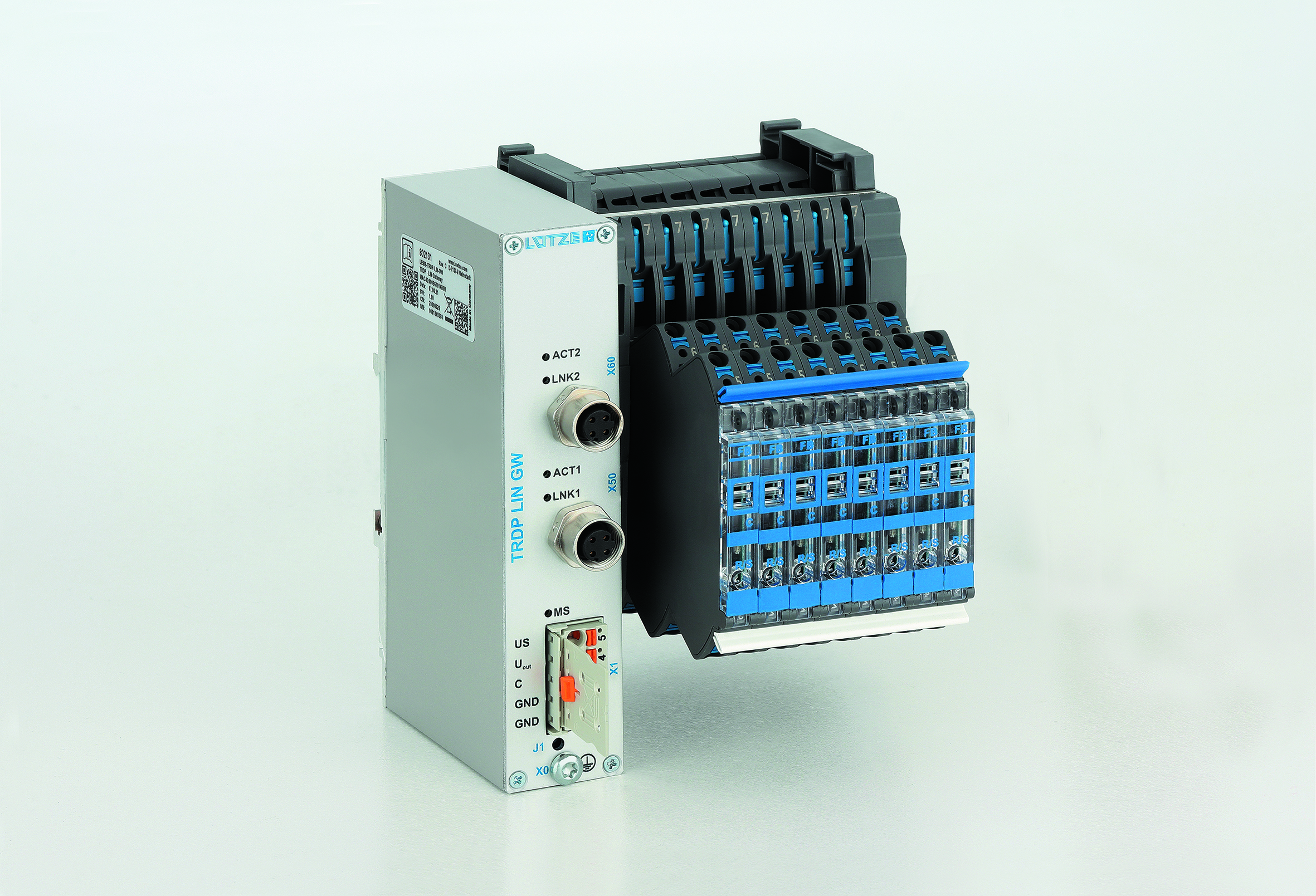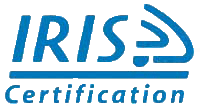14.05.2024 | Art. No. 810028, 810029, 810050, 810051 | 04.22.2024
Rail-compatible 230 V sockets with USB-C charger ports
Lütze Transportation presents sockets with integrated USB-C and USB-A charger ports. These sockets comply with Regulation No. EMV 06 of the Federal Railway Authority and EN 50121-3-2.
Railway technology specialist Lütze Transportation, based in Weinstadt, Germany responds to the EU's requirements that USB-C will become the standard for charging cables by the end of 2024 with new Schuko sockets featuring integrated USB-C ports. Lütze Transportation offers the sockets in two variants: Schuko socket (Type F/CEE 7/3) plus two USB-C ports or the combination solution with one USB-A plus one USB-C port. These very compact sockets are suitable for installation in passenger areas and driver's cabs, and comply with EN 50121-3-2, which regulates electromagnetic compatibility in the railway environment, as well as Regulation No. EMV 06 of the Federal Railway Authority. Compliance with this regulation means retrofits, or aftermarket installations, are possible. The sockets meet all relevant railway requirements regarding environmental conditions and fire behavior according to EN 50155, EN 61373, EN 50124-1, and EN 45545-2. The possible temperature range is -25°C to +55°C during permanent operation.


Fig.: The new 230V sockets from Lütze Transportation with USB-A/USB-C and USB-C/USB-C charging ports
| Download Photo |
The two USB charging ports of the new 230V sockets provide a charging current of 1.5A each at 15W. If only one of the two ports is used, a charging current of up to 3A is available. The USB charging ports consume less than 70mW in standby mode in the USB-A/USB-C version, and less than 50mW in the version with two USB-C ports. Therefore, onboard networks are minimally loaded. By means of dynamic recognition of the charging protocol, the power needs of the connected mobile device, be it a phone or tablet, are recognized and the charging current is adapted efficiently. The USB-A charging ports are designed for a minimum of 5,000 insertion cycles, and the USB-C charging ports for a minimum of 10,000 insertion cycles.
The Schuko sockets feature a mechanical protection against accidental contact (shutter) and are designed for a lifespan of at least 5,000 insertion cycles. With an installation depth of only 44mm, the sockets can be easily integrated into seating units or bulkheads. Optional are the 230V sockets with plug type E, suitable for use in France, Poland, and the Czech Republic. Lütze Transportation offers the sockets in two colour options: pure white matte or anthracite. Cover frames are available as accessories in the corresponding colors.
Lütze Transportation is currently conducting tests on the next generation of charging ports based on USB-PD (Power Delivery). This technology supports power output of up to 60 watts, enabling the charging of laptops and potentially making conventional Schuko sockets redundant in rail vehicles.
Characters: 2,835 incl. spaces from bottom of page
Background on Regulation No. EMV 06
EMV 06 is a technical regulation of the Federal Railway Authority and regulates the proof of radio compatibility of rail vehicles with railway radio services. In retrofits, all components are only approved for railway transport if electromagnetic interference within railway radio services is excluded.
Background EN 50121
The European standard EN 50121 deals with electromagnetic compatibility (EMC) in rail transport. It sets out the requirements for electromagnetic compatibility for all aspects of the railway system, including vehicles, signaling technology, and telecommunications.
Background on USB-C
The Federal Government decided in autumn 2023 to amend the Radio Equipment Act, thereby implementing an EU regulation for uniform charging cables. USB-C will become the new standard for smartphones, digital cameras, headphones, tablets, portable video game consoles, keyboards, e-readers, navigation devices, headsets, and portable speakers by the end of 2024, provided they can be charged with a cable. From 2026, this charging standard will also apply to notebooks.

